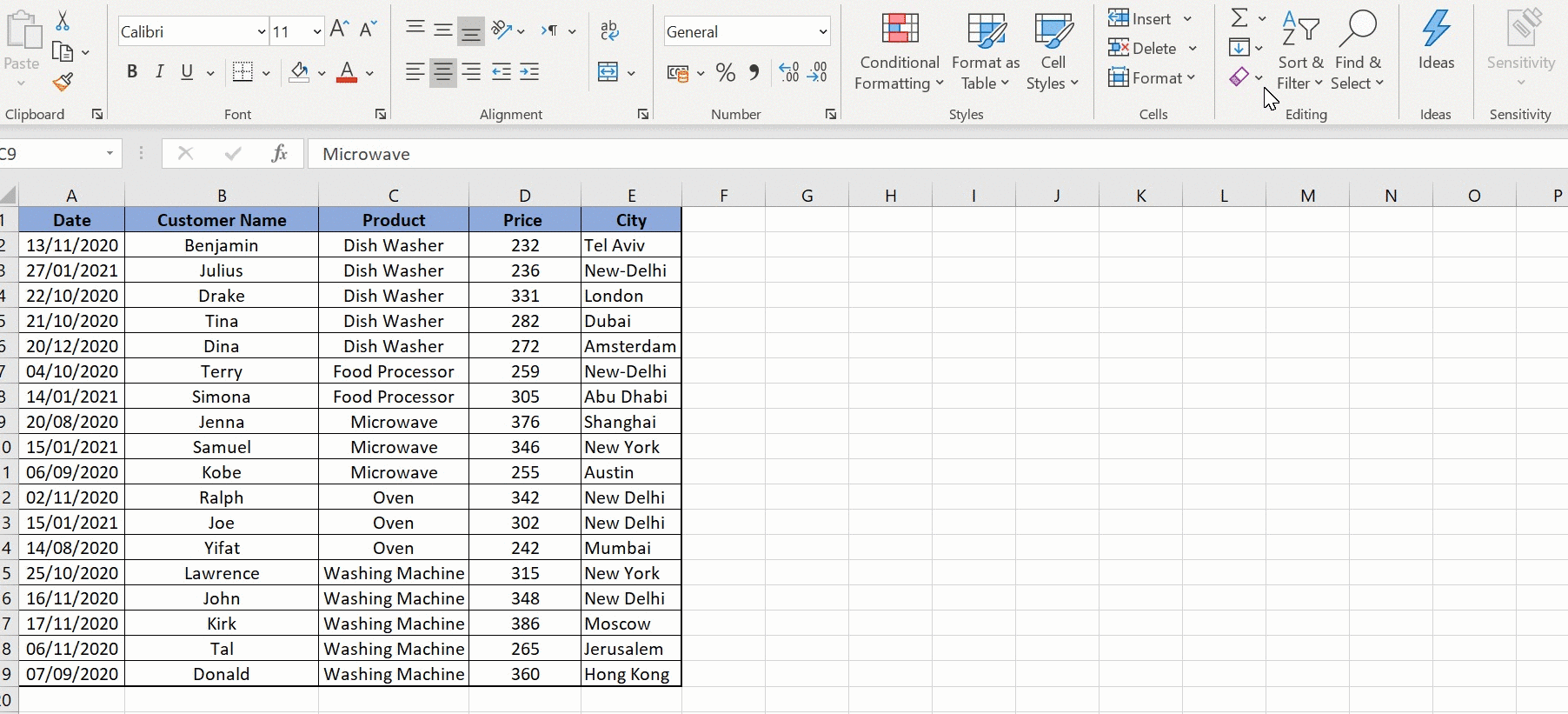Master Excel Sorting: A Simple Guide

Microsoft Excel's sorting capabilities can transform your data management experience, turning endless rows and columns into an organized, insightful masterpiece. Whether you're managing business financials, academic research, or personal records, mastering Excel's sorting features is a game-changer.
Understanding Excel Sort Basics


Before you dive into Excel’s advanced sorting techniques, it’s crucial to grasp the foundational concepts:
- Sorting Order: You can sort your data Ascending or Descending, where ascending means arranging from A-Z or 1-10, and descending means from Z-A or 10-1.
- Sorting Range: You decide whether to sort the entire sheet or a selected range of cells.
- Column Sort: Sorting can be applied to a single column, affecting adjacent columns or just that column alone.
Steps for Basic Sorting

Here’s how to perform a basic sort:
- Select the column or range of cells you wish to sort.
- Navigate to the ‘Data’ tab on the Excel ribbon.
- Click on ‘Sort A to Z’ or ‘Sort Z to A’ for a quick sort.
- Alternatively, click ‘Sort’ to open the ‘Sort’ dialogue for more options.
📝 Note: Excel sorts alphanumerically, which means numbers come first before letters. So, ‘10’ would appear before ‘2’ in an ascending sort.
Advanced Sorting Techniques

Excel’s advanced sorting options allow for intricate data manipulation. Here are some techniques:
Sorting by Multiple Columns

You can sort by more than one column at a time:
- Select your data range.
- Go to ‘Data’ > ‘Sort’.
- In the ‘Sort’ dialog, click ‘Add Level’ to include additional sort criteria.
- Define the first level, then add subsequent levels to prioritize your sorting.
| Step | Description |
|---|---|
| 1. Select | Choose your data range or the whole table. |
| 2. Open Sort Dialog | Go to Data > Sort. |
| 3. Add Sort Levels | Click ‘Add Level’ for multiple sorting criteria. |

Custom Sort Lists

If you need to sort data in a non-standard way, custom lists come to the rescue:
- Go to ‘File’ > ‘Options’ > ‘Advanced’.
- Scroll to the ‘General’ section and click ‘Edit Custom Lists’.
- Enter your custom list (e.g., “High,” “Medium,” “Low” for sorting by priority).
- When sorting, select ‘Custom List’ from the ‘Order’ dropdown in the ‘Sort’ dialog.
💡 Note: Custom sort lists are especially useful in scenarios like sorting by employee performance ratings or product categories in inventory management.
Sorting with Formulas

If your data sorting depends on conditions, formulas can be your sorting key:
- Create a helper column where you apply the formula you want to sort by.
- Sort this column to achieve your desired data arrangement.
Final Thoughts

In conclusion, Excel’s sorting capabilities are expansive and versatile, catering to basic sorting needs as well as complex data scenarios. By employing various sorting techniques, from basic to advanced, you can efficiently organize and analyze your data, revealing insights and patterns you might otherwise miss. Remember, the key to becoming an Excel sorting pro is practice and understanding how different sorting options interact with your data.
What’s the difference between sorting a single column and sorting a range?

+
Sorting a single column rearranges only that column, potentially disrupting data integrity. Sorting a range considers adjacent columns, keeping related data together.
Can you sort data based on cell color?

+
Yes, Excel allows sorting by cell color. In the ‘Sort’ dialog, choose ‘Sort on’ and select ‘Cell Color’. Then specify the color from the list.
How do I sort while maintaining data integrity?

+
Ensure you select all related columns when sorting. Also, using tables in Excel can automatically include headers in the sort, preserving data relationships.



